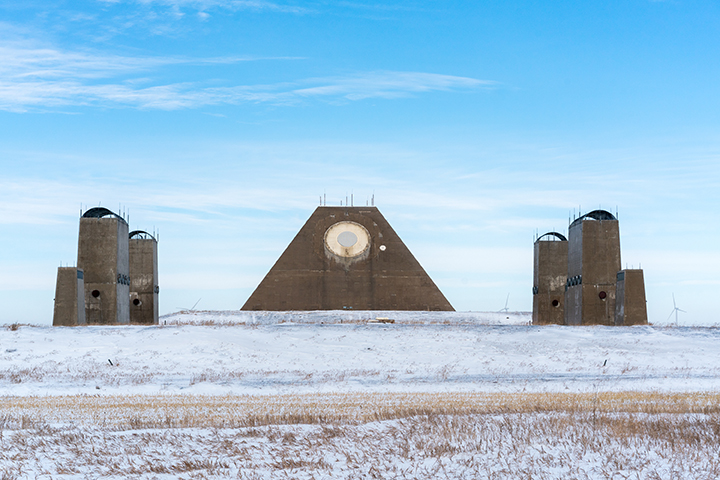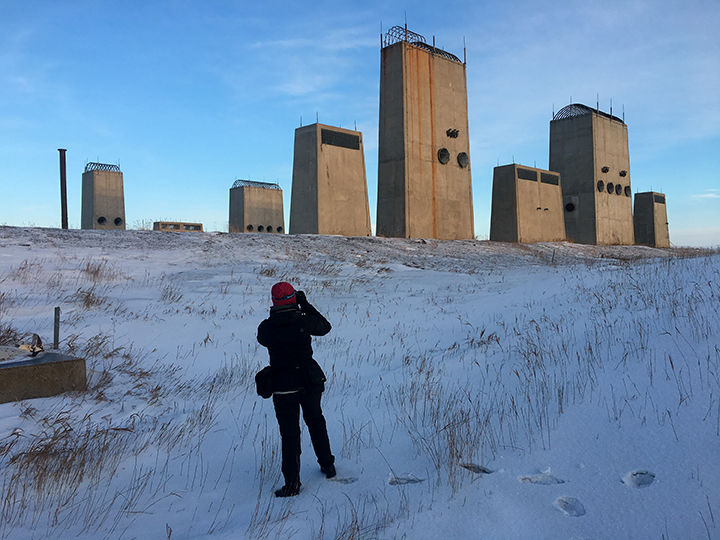This article is a response from Ethan Leong after a visit to her exhibition and a Skype conversation with Sim Chi Yin in September 2018 about her recent photography exhibition, Most People Were Silent. He shares his reflections on the arts and advocacy here.
Sim Chi Yin’s Most People Were Silent was held at the Institute of Contemporary Arts Singapore, LASALLE College of the Arts from 20 July to 10 October 2018. Find out more about the exhibition here.
People who are familiar with photographer-artist Sim Chi Yin’s work may have been surprised by how her work was characterised in Singapore prime minister Lee Hsien Loong’s 2018 National Day Rally Speech, when he said:
This is Sim Chi Yin. She is an award winning documentary photographer and artist. She was commissioned as the Nobel Peace Prize photographer last year, the first Asian to be chosen, and travels to places like North Korea to pursue her very adventurous projects [bold by writer].
It was an undoubtable reference to her exhibition commission for the Nobel Peace Prize 2017, Fallout. The exhibition was reconfigured for LASALLE’s Institute of Contemporary Arts Singapore, and curated by Caterina Riva.
I found the prime minister’s speech remarkable in its omission of Sim’s earlier work—from the heart-rending examination of the effects of pneumoconiosis on Chinese miners, to the subterranean struggles of Beijing’s new migrants—constructing powerful narratives of society’s underclass has been a hallmark of Sim’s practice. Her latest exhibition Most People Were Silent, however, marked a departure from a human interest angle.

Chi Yin Sim (@chiyin_sim) photographs a decommissioned B52 Bomber at the Davis-Monthan Air Force Base Boneyard in Tucson, Arizona on November 20, 2017. B52 bombers were designed to carry nuclear weapons and are still in service in the United States Air Force today. This particular aircraft is one of several dozen that provide parts for the B52s still being flown. // Photo by Gabriel Ellison-Scowcroft (@gabrielellisonscowcroft).
When I stepped into the Earl Lu Gallery on a weekday afternoon to visit Most People Were Silent, the first sight I noticed was the vast space. Suspended on screens 106.7 x 160 cm in dimension were Sim’s photographs, the cautious distance between them more palpable than the absence of physical demarcation, more perceptible than the lack of text explaining her work. The sound of a Geiger counter crackled its greeting at the end of the gallery, the impatient clicks a seeming reminder of the grim urgency of the exhibition’s subject.
Most People Were Silent contained photographs from a series of diptychs Sim had produced for a previous exhibition, which juxtaposed scenes from the United States and the North Korean border. Like a portent of a post-apocalyptic future, the photographs conveyed a distinct sense of dereliction. Sim revealed that it was a conscious choice for her to extract the sense of desolation in the places she explored. As a visitor to the exhibition, it seemed then that the absence of mankind—in the work of an artist known for featuring people and undressing the human condition—was a striking statement by the artist. When I pressed further, Sim shared that addressing denuclearisation through a human interest story could be compelling, but could also be reductionistic if it was presented through a singular, individual perspective, given the scale of such an extensive geopolitical issue.
Given Fallout’s commission by the Nobel Peace Prize, observers may have predicted the exhibition adopting a pacifist approach against nuclear armament. Sim explains that the exhibition could have taken a more didactic turn to explicitly portray the devastating effects of nuclear weapons on mankind, featuring the survivors of the atomic bombings of Hiroshima and Nagasaki. The present approach paid dividends; Sim shared the positive reception to Most People Were Silent; the good turnout included some elderly, surely an atypical demographic. During a public discussion, former employees at nuclear facilities praised how the body of work captured the complexities of their profession and, Sim was impressed by the quality of discourse.

From “Fallout”, 2017, 35mm digital. An anti-ballistic missile defense radar facility, North Dakota, November 2017. / The pyramid-shaped Missile Site Control Building stands in the middle of the Stanley R Mickelsen SAFEGUARD Complex. This anti-ballistic missile defense site — the only one to be built in the US — was designed to detect and intercept attacking nuclear warheads from Soviet missiles coming over the North Pole. Nuclear-tipped Sprint and Spartan anti-ballistic missiles were deployed at the site to shoot down the incoming Soviet missiles. The facility, built in the early to mid 1970s at a cost of US$5.7 billion, near Langdon, North Dakota, was fully operational for only a day in October 1975 before Congress voted to shut it down. At the time it had one of the most advanced radar systems, and boasted one of the most powerful computers, in the world. Because of its effect as a deterrent to the Soviets, it is seen as having been a bargaining chip for the US in the SALT treaties. Picture by Sim Chi Yin for the Nobel Peace Center/2017
The challenge in the time of social media for documentarians like herself isn’t to preach to the converted, but to spur interest among people with different mindsets.
One important consideration in reaching a wide audience was taking a neutral position and an open-ended approach as opposed to a moralistic one. Sim recalled learning a valuable lesson from her previous project, Day Off. The collaboration with migrant worker rights group TWC2 was meant to address misconceptions about the entitlements of domestic workers. Sim featured domestic workers on their day off: doing everyday activities that a typical Singaporean would on weekends such as shopping and hanging out with their friends.
Even though the work enjoyed high visibility in public places, the lukewarm reception suggested that explicit activism was not something that Singaporeans are receptive to. Despite this, Sim believes that the arts can reach people in a transcendental way. The challenge in the time of social media for documentarians like herself isn’t to preach to the converted, but to spur interest among people with different mindsets. Although Sim is wary of being overly prescriptive in Most People Were Silent, she feels it is important for a piece of work to carry a point of view.

Chi Yin Sim (@chiyin_sim) photographs the air intake and exhaust stacks of the underground power station at the Stanley R. Mickelsen Site outside Nekoma, North Dakota on November 17, 2017. The Stanley R. Mickelsen Site’s purpose was to intercept incoming Soviet missiles. The complex was designed to withstand anything but a direct nuclear hit and contained a vast underground structure from which personnel could manage the site’s computers and radar. // Photo by Gabriel Ellison-Scowcroft (@gabrielellisonscowcroft).
I wonder about the parallels between the observers of the Trinity nuclear test, and the bulk of present-day society’s attitudes toward activism and art, as J. Robert Oppenheimer had once said, “Few people laughed, few people cried, most people were silent.” Does the phrase “most people were silent” indicate most people’s apathy towards global and social issues today?
I struggle to remember if Oppenheimer’s interview was being played on a loop at the exhibition, my aural memory obfuscated by the dispassionate crackling of the Geiger counter.
References
* Lee, H.L. “Better Home, Brighter Tomorrows.” Press Statements and Speeches, Ministry of Foreign Affairs, n.d.. Web. 26 November. 2018.
